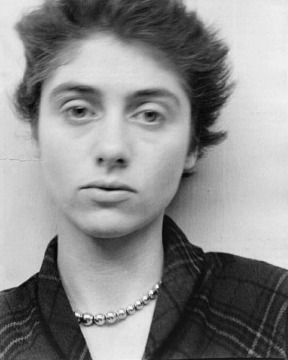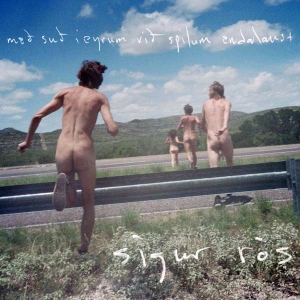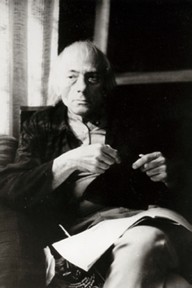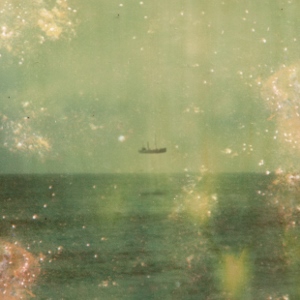Related Research Articles

Diane Arbus was an American photographer. She photographed a wide range of subjects including strippers, carnival performers, nudists, people with dwarfism, children, mothers, couples, elderly people, and middle-class families. She photographed her subjects in familiar settings: their homes, on the street, in the workplace, in the park. "She is noted for expanding notions of acceptable subject matter and violates canons of the appropriate distance between photographer and subject. By befriending, not objectifying her subjects, she was able to capture in her work a rare psychological intensity." In his 2003 New York Times Magazine article, "Arbus Reconsidered", Arthur Lubow states, "She was fascinated by people who were visibly creating their own identities—cross-dressers, nudists, sideshow performers, tattooed men, the nouveaux riches, the movie-star fans—and by those who were trapped in a uniform that no longer provided any security or comfort." Michael Kimmelman writes in his review of the exhibition Diane Arbus Revelations, that her work "transformed the art of photography ". Arbus's imagery helped to normalize marginalized groups and highlight the importance of proper representation of all people.
Robert Adams is an American photographer who has focused on the changing landscape of the American West. His work first came to prominence in the mid-1970s through his book The New West (1974) and his participation in the exhibition New Topographics: Photographs of a Man-Altered Landscape in 1975. He has received two Guggenheim Fellowships, a MacArthur Fellowship, the Deutsche Börse Photography Prize and the Hasselblad Award.

Garry Winogrand was an American street photographer, known for his portrayal of U.S. life and its social issues, in the mid-20th century. Photography curator, historian, and critic John Szarkowski called Winogrand the central photographer of his generation.
Lee Friedlander is an American photographer and artist. In the 1960s and 1970s, Friedlander evolved an influential and often imitated visual language of urban "social landscape," with many of his photographs including fragments of store-front reflections, structures framed by fences, posters and street signs. His work is characterized by its innovative use of framing and reflection, often using the natural environment or architectural elements to frame his subjects. Over the course of his career, Friedlander has been the recipient of numerous awards and his work has been exhibited in major museums and galleries worldwide.
Tina Barney is an American photographer best known for her large-scale, color portraits of her family and close friends in New York and New England. She is a member of the Lehman family.

Jón Þór "Jónsi" Birgisson is an Icelandic musician; he is the vocalist and multi-instrumentalist for the Icelandic post-rock band Sigur Rós. He is known for his use of a cello bow on guitar and his "angelic" falsetto or countertenor voice.
Seydou Keïta was a Malian photographer known for his portraits of people and families he took at his portrait photography studio in Mali's capital, Bamako, in the 1950s. His photographs are widely acknowledged not only as a record of Malian society but also as pieces of art.
Malick Sidibé was a Malian photographer noted for his black-and-white studies of popular culture in the 1960s in Bamako. Sidibé had a long and fruitful career as a photographer in Bamako, Mali, and was a well-known figure in his community. In 1994 he had his first exhibition outside of Mali and received much critical praise for his carefully composed portraits. Sidibé's work has since become well known and renowned on a global scale. His work was the subject of a number of publications and exhibited throughout Europe and the United States. In 2007, he received a Golden Lion Award for Lifetime Achievement at the Venice Biennale, becoming both the first photographer and the first African so recognized. Other awards he has received include a Hasselblad Award for photography, an International Center of Photography Infinity Award for Lifetime Achievement, and a World Press Photo award.

Alec Soth is an American photographer, based in Minneapolis. Soth makes "large-scale American projects" featuring the midwestern United States. New York Times art critic Hilarie M. Sheets wrote that he has made a "photographic career out of finding chemistry with strangers" and photographs "loners and dreamers". His work tends to focus on the "off-beat, hauntingly banal images of modern America" according to The Guardian art critic Hannah Booth. He is a member of Magnum Photos.
Nick Waplington is a British / American artist and photographer. Many books of Waplington's work have been published, both self-published and through Aperture, Cornerhouse, Mack, Phaidon, and Trolley. His work has been shown in solo exhibitions at Tate Britain and The Photographers' Gallery in London, at Philadelphia Museum of Art in the USA, and at the National Museum of Photography, Film & Television in Bradford, UK; and in group exhibitions at Venice Biennale, Italy and Brooklyn Museum, New York City. In 1993 he was awarded an Infinity Award for Young Photographer by the International Center of Photography. His work is held in the permanent collections of the Solomon R. Guggenheim Museum in New York City, Victoria and Albert Museum and Government Art Collection in London, National Gallery of Australia, the Philadelphia Museum of Art, and Royal Library, Denmark.
Miyako Ishiuchi, is a Japanese photographer.

Með suð í eyrum við spilum endalaust is the fifth full-length studio album by the Icelandic post-rock band Sigur Rós, released on 23 June 2008.

Louis Faurer was an American candid or street photographer. He was a quiet artist who never achieved the broad public recognition that his best-known contemporaries did; however, the significance and caliber of his work were lauded by insiders, among them Robert Frank, William Eggleston, and Edward Steichen, who included his work in the Museum of Modern Art exhibitions In and Out of Focus (1948) and The Family of Man (1955).
Laurence Bruce Fink was an American photographer and educator, best known for his black-and-white images of people at parties and in other social situations.
Steve Giovinco is an American photographer. He created a hand-held large-format (8x8") camera in 1992.
Miles Aldridge is a British fashion photographer and artist.

Team Gallery is a contemporary art gallery located in the SoHo neighborhood of New York City, with an additional project space in Venice, Los Angeles, California. It was founded by José Freire and Lisa Ruyter in 1996. Team has represented such artists as Ryan McGinley, Banks Violette, Cory Arcangel, Sam McKinniss, and Gardar Eide Einarsson.

Valtari is the sixth studio album by Icelandic post-rock band Sigur Rós. It was released on 23 May 2012 by Parlophone. The album reached number eight on the UK Albums Chart and seven on the Billboard 200. The album was met with positive reviews as well with Metacritic, which assigns a normalised rating out of 100 to reviews from mainstream critics, the album received an average score of 74, based on 36 reviews, indicating "generally favorable reviews".
Deana Lawson (1979) is an American artist, educator, and photographer based in Brooklyn, New York. Her work is primarily concerned with intimacy, family, spirituality, sexuality, and Black aesthetics.
Michael Bailey-Gates is an American artist, photographer, and model. He was born in Rhode Island, and currently resides in New York City.
References
- ↑ "The Guggenheim Museums and Foundation". The Guggenheim Museums and Foundation. Retrieved May 6, 2023.
- ↑ Jack Crager, American Photo, July/August 2003
- ↑ "Ryan McGinley Young Photographer". Archived from the original on December 11, 2008.
- ↑ Burbridge, Alice Gregory, Richard (April 11, 2014). "Ryan McGinley: The Most Important Photographer in America". GQ. Retrieved March 1, 2016.
{{cite web}}: CS1 maint: multiple names: authors list (link) - ↑ "20 Things You Didn't Know About Ryan McGinley". Complex. Retrieved March 14, 2016.
- ↑ Philip Gefer (May 6, 2007), A Young Man With an Eye, and Friends Up a Tree The New York Times .
- 1 2 Holland Cotter (February 14, 2003), 'The Kids Are Alright' – 'Photographs by Ryan McGinley' The New York Times
- 1 2 Philip Gefter, The New York Times , Sunday, May 6, 2007
- ↑ "", Ariel Levy, Chasing Dash Snow , New York , January 7, 2007
- ↑ Levy, Ariel (November 25, 2007). "Chasing Artist and Downtown Legend Dash Snow – New York Magazine". New York. Retrieved December 5, 2013.
- ↑ Horacio Silva (March 18, 2010), Studio Visit | Ryan McGinley T .
- ↑ Kluger, Jeffrey (May 29, 2008). "Ryan McGinley". Time. ISSN 0040-781X . Retrieved March 7, 2016.
- ↑ Burbridge, Alice Gregory, Richard (April 11, 2014). "Ryan McGinley: The Most Important Photographer in America". GQ. Retrieved March 1, 2016.
{{cite web}}: CS1 maint: multiple names: authors list (link) - ↑ "Gus Van Sant". RYAN McGINLEY. Archived from the original on March 16, 2016. Retrieved March 14, 2016.
- ↑ Silva, Horacio (March 22, 2010). "Now Screening | 'Everybody Knows This Is Nowhere'". T Magazine. Retrieved March 3, 2016.
- ↑ "Team Gallery". Team Gallery. Retrieved March 3, 2016.
- ↑ "What Did Miley Spend $300,000 on at Auction?". People. Retrieved March 7, 2016.
- ↑ CNN, Lisa Respers France (October 20, 2017). "Ines Rau is the first transgender Playmate". CNN. Retrieved October 15, 2019.
{{cite web}}:|last1=has generic name (help) - ↑ Freeman, Nate (November 20, 2013). "Ryan McGinley, the Pied Piper of the Downtown Art World". The New York Times. ISSN 0362-4331 . Retrieved March 1, 2016.
- ↑ Freeman, Nate (November 20, 2013). "Ryan McGinley, the Pied Piper of the Downtown Art World". The New York Times. ISSN 0362-4331 . Retrieved March 1, 2016.
- ↑ "Ryan McGinley's Advice to Young Photographers | VICE | United States". VICE. Retrieved March 3, 2016.
- ↑ Ryan McGinley Studios (June 10, 2014), Ryan McGinley: Parsons Commencement 2014 Speech, archived from the original on December 21, 2021, retrieved March 3, 2016
- ↑ Burbridge, Alice Gregory, Richard (April 11, 2014). "Ryan McGinley: The Most Important Photographer in America". GQ. Retrieved March 7, 2016.
{{cite web}}: CS1 maint: multiple names: authors list (link) - ↑ Lauren Gitlin, Spin , November 2007
- ↑ "sigur rós – discography » með suð í eyrum við spilum endalaust". sigur-ros.co.uk. Retrieved June 30, 2008.
- ↑ "Sigur Rós "Varúð" Video Directed by Ryan McGinley to Play on New York City Taxi TVs". Pitchfork. January 10, 2013. Retrieved February 29, 2016.
- ↑ Fund, Art Productuion. "Ryan McGinley: Midnight Moment". Art Production Fund. Retrieved March 1, 2016.
- ↑ "Yass! Here's our Beyoncé interview in full!". Beat. Retrieved March 1, 2016.
- ↑ "Exclusive Photos: Lady Gaga's Rolling Stone Photo Shoot". Rolling Stone. May 25, 2011. Retrieved March 1, 2016.
- ↑ Dazed (June 18, 2015). "Pop prodigy Lorde opens up to Lena Dunham". Dazed. Retrieved March 1, 2016.
- ↑ Sokolove, Michael (August 8, 2004). "Built to Swim". The New York Times.
- ↑ "Breaking Through | the New York Times". The New York Times .
- ↑ "2010 Winter Olympics - the Highfliers - Slide Show - the New York Times". The New York Times .
- ↑ "NOWNESS".
- ↑ "NOWNESS".
- ↑ "Ryan McGinley & Tilda Swinton". Explore Pringle of Scotland. Archived from the original on March 12, 2016. Retrieved March 3, 2016.
- ↑ "NOWNESS".
- ↑ "sigur rós – valtari videos – varúð by ryan mcginely". Eighteen Seconds Before Sunrise.
- ↑ "NOWNESS".
- ↑ "NOWNESS".
- ↑ "NOWNESS".
- ↑ "MoMA PS1: Exhibitions: Ryan McGinley". momaps1.org. Retrieved March 18, 2016.
- ↑ "Ryan McGinley MUSAC Contemporary Art Museum Leon". 1995-2015.undo.net. Retrieved March 18, 2016.
- ↑ "Médiathèque des Rencontres de la photographie, Arles". Médiathèque des Rencontres de la photographie, Arles. April 23, 2014. Retrieved March 18, 2016.
- ↑ "Ryan McGinley : Irregular Regulars".
- ↑ "", David Velasco, Artforum , January 5, 2007
- ↑ "Ryan McGinley : I Know Where the Summer Goes".
- ↑ Jeffrey Kluger, Thursday, May 29, 2008
- ↑ "Ryan McGinley: Life Adjustment Center – Ratio 3 – San Francisco".
- ↑ "Ryan McGinley : Animals". teamgal.com. Retrieved January 11, 2016.
- ↑ "Ryan McGinley : Grids". teamgal.com. Retrieved January 11, 2016.
- ↑ "Ryan McGinley: Yearbook | Ratio 3 – San Francisco". www.ratio3.org. Retrieved January 11, 2016.
- ↑ "Ryan McGinley : Yearbook". teamgal.com. Retrieved January 11, 2016.
- ↑ "Ryan McGinley Photographs 1999–2015". kunsthalkade.nl. Retrieved January 11, 2016.
- ↑ "Ryan McGinley : Art | 46 | Basel | Art Unlimited". teamgal.com. Retrieved January 11, 2016.
- ↑ "Ryan McGinley : Fall". teamgal.com. Retrieved January 11, 2016.
- ↑ "Ryan McGinley : Winter". teamgal.com. Retrieved January 11, 2016.
- ↑ "Storylines: Contemporary Art at the Guggenheim". guggenheim.org. Retrieved March 14, 2016.
- ↑ "Guggenheim Collection Online".
- ↑ "National Portrait Gallery | Feature Photography". npg.si.edu. Retrieved March 14, 2016.
- ↑ "Team Gallery Artist Bio" (PDF).